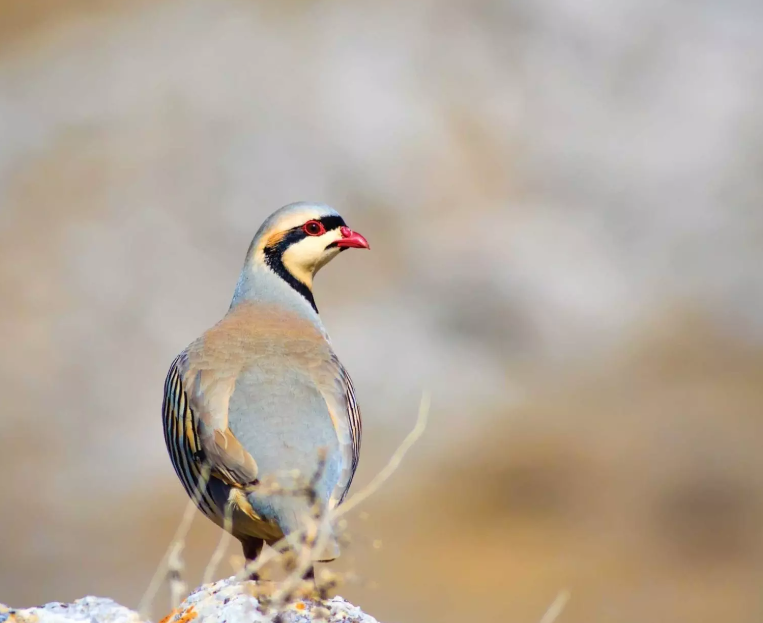Cabo Verde is a nation with a rich history and culture. The Cabo Verde National Bird, the grey-headed kingfisher, is just one of the many unique and fascinating creatures that can be found on its islands. By learning about this bird’s physical characteristics, habitat, feeding habits, and cultural significance, we can better understand and appreciate the beauty of Cabo Verde’s natural environment. We must also do our part to protect and conserve the habitats of these birds and other wildlife so that they can continue to thrive for generations to come.
Cabo Verde’s national bird is the grey-headed kingfisher (Halcyon leucocephala), a medium-sized bird that belongs to the Alcedinidae family. This bird is also known as the Cabo Verde kingfisher or the white-headed kingfisher.
The grey-headed kingfisher is not only the national bird of Cabo Verde, but it is also an important symbol of the country’s natural heritage. As an endemic species, it is found only on the Cabo Verde Islands and nowhere else in the world. This makes it a unique and valuable part of the islands’ biodiversity.
Physical Description of Cabo Verde National Bird
The grey-headed kingfisher is a medium-sized bird, with a total length of around 25 cm (10 inches). It has a large head, short neck, and a long, pointed beak. Its wings are short and rounded, and its tail is medium in length.
Size and Weight
The grey-headed kingfisher is a relatively small bird, weighing between 35-45 grams (1.2-1.6 ounces). Females tend to be slightly larger than males.
Plumage and Colors
The grey-headed kingfisher has a distinctive appearance, with a blue-gray head and upper body, a white belly, and a bright blue rump. Its wings are dark brown with white spots, and its tail is dark blue with white tips. The beak and legs are bright red-orange.
Behavioral Characteristics
The grey-headed kingfisher is a solitary bird that is typically found perched on branches overlooking water. It is known for its distinctive call, a series of high-pitched whistles that can be heard throughout its territory.
Habitat and Distribution
The grey-headed kingfisher is endemic to the Cabo Verde Islands, a group of 10 volcanic islands off the coast of West Africa.
The grey-headed kingfisher is found in a variety of habitats on the Cabo Verde Islands, including wooded areas, savannas, and coastal regions. It is particularly common near rivers, streams, and other bodies of water, where it feeds on fish and other aquatic animals.
Diet and Feeding Habits
The grey-headed kingfisher is primarily carnivorous, feeding on a variety of small animals, including fish, crustaceans, and insects. It hunts by perching on a branch overlooking the water, then swooping down to catch its prey in its beak.
Hunting Techniques and Strategies
The grey-headed kingfisher is a skilled hunter that uses a variety of techniques to catch its prey. It is known to hover over the water before diving in to catch fish, and it may also dive headfirst into the water to catch crustaceans and other aquatic animals.
Reproduction and Life Cycle
The grey-headed kingfisher is a monogamous bird that typically mates for life. During courtship, the male will bring food to the female and perform a series of displays, including bowing, tail fanning, and wing flapping.
The grey-headed kingfisher builds its nest in a tree cavity or hole in a riverbank. The female will lay a clutch of 3-5 eggs, which both parents will take turns incubating for around 20 days.
After hatching, the chicks are fed by both parents for several weeks before they are ready to leave the nest. They will continue to be fed by their parents for several more weeks until they are fully independent.
Cultural Significance and Conservation Status of Cabo Verde National Bird
The grey-headed kingfisher is an important symbol of the natural heritage of Cabo Verde. It is featured on the country’s coat of arms and is celebrated in local art and literature.
Conservation Status
Despite its cultural significance, the grey-headed kingfisher is currently classified as a species of “least concern” by the International Union for Conservation of Nature (IUCN). However, like many bird species, it may be threatened by habitat loss and fragmentation caused by human activities.
Frequently Asked Questions (FAQs)
- What is the scientific name of the grey-headed kingfisher?
The scientific name of the grey-headed kingfisher is Halcyon leucocephala.
- How long do grey-headed kingfishers live?
Grey-headed kingfishers can live for up to 10 years in the wild.
- Are grey-headed kingfishers endangered?
No, the grey-headed kingfisher is currently classified as a species of “least concern” by the International Union for Conservation of Nature (IUCN).
- Do grey-headed kingfishers migrate?
No, grey-headed kingfishers are non-migratory birds that are found year-round on the Cabo Verde Islands.
- How can I see a grey-headed kingfisher in the wild?
If you are interested in seeing a grey-headed kingfisher in the wild, the best way to do so is by visiting the Cabo Verde Islands and exploring the bird’s natural habitat. However, it is important to do so responsibly and to avoid disturbing the bird’s natural environment.

